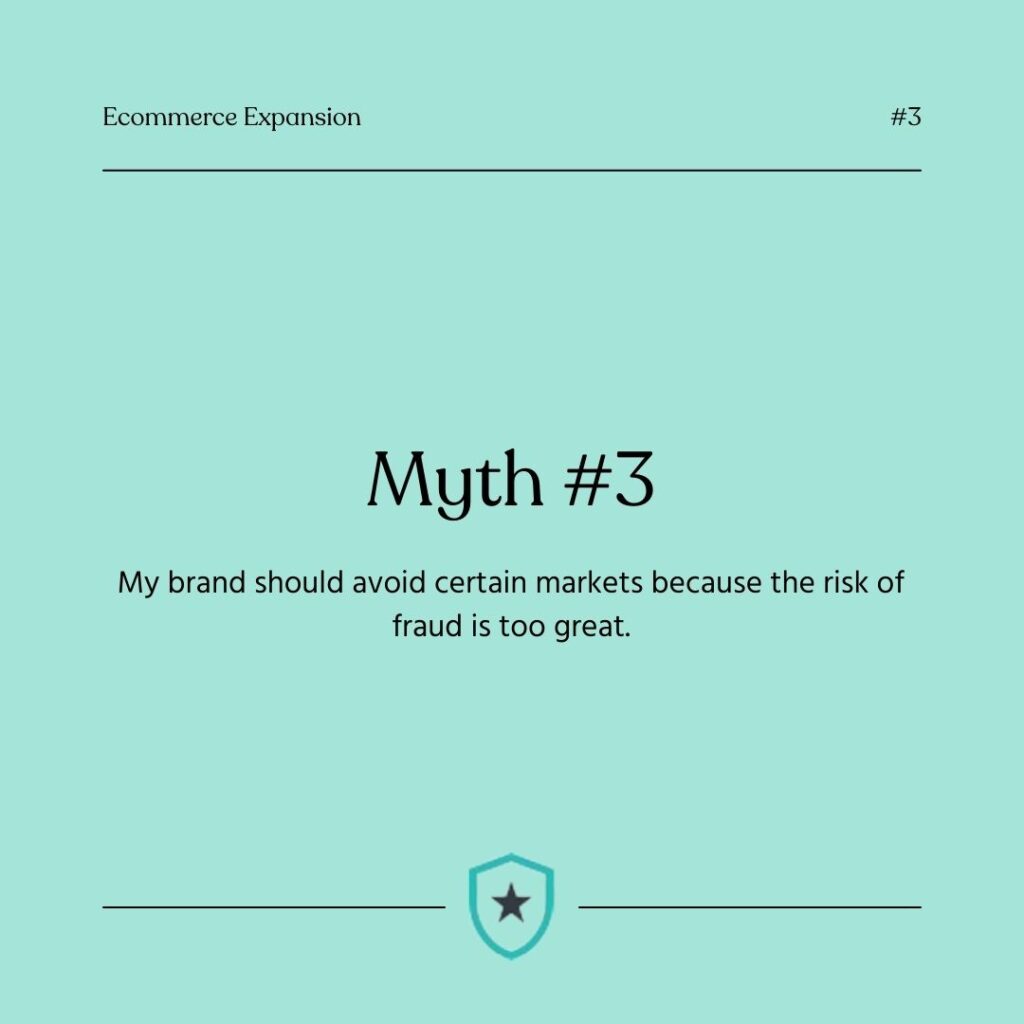Growing and established brands alike know that keeping to domestic markets hampers overall growth. With increased global internet use and social media exposure, more shoppers have more access to more products than ever before. In an environment that makes everything – including international ecommerce expansion – seem like only a matter of pressing a button, brands need to know the reality.
Despite massive leaps in technology and globalisation, some of the requirements for launching a DTC presence in a new market are still quite manual and different from market to market.
Here are four myths that you need to know about so that you can expand your brand and have a long-term, profitable presence in international markets.
Myth #1: Using my brand’s existing, domestic cart and checkout saves money.

While it’s true that deploying existing resources is a cost-saver, in international ecommerce, that savings is only temporary. Why? Because the solutions that work in a domestic market do work long-term in international markets and in fact inhibit growth.
For example, shoppers in different markets prefer different payment methods. If your domestic checkout does not support a country’s preferred methods, shoppers will click away.
Those shoppers may also leave your site without making a purchase if something as seemingly small as the address format is not localised. Duplicating your domestic address format and terminology into global markets can confuse shoppers. On the backend, if your checkout cannot print shipping labels properly, you run the risk of lost packages and future lost sales.
Since 2018, global ecommerce cart abandonment rates have hovered around 69%. The top reason shoppers give for leaving a checkout without completing the purchase is unexpected and high extra costs like taxes, duties and shipping.
Charges like taxes, duties and shipping vary from country to county. If you try to deploy your existing checkout solution into new markets and tack taxes and duties on during checkout, you risk losing the sale. The money you might have saved by trying to copy-and-paste your checkout in every market actually costs you.
For long-term growth in international markets, you should localise your checkout. Localising the checkout with local address formats, currencies and up-front costs demonstrates transparency that builds trust.
Myth #2: Cross-border logistics are complicated. International customers know that and will tolerate longer delivery times.

It may be true that shoppers have lower expectations of shipping times from international brands. But our Global Voices survey shows that around 40% of shoppers still expect packages to arrive within a week – regardless of origin.
Every year, shoppers expect shorter and shorter delivery times. Despite their changing expectations, the logistics infrastructure remains largely the same. Inventory must be pulled, packages must clear customs, duties and taxes must be calculated and paid.
In every new market, your brand must negotiate contracts for warehousing, logistics and last-mile delivery. Vetting partners takes time and slows time to market. But without proper vetting, you run the risk of onboarding an unreliable partner that reduces margin.
For long-term profitable growth, you may want to look at outsourcing logistics and compliance. The cost of understanding the complexities in each market chips away at speed to market and the incremental revenue that is waiting around the globe.
Myth #3: My brand should avoid certain markets because the risk of fraud is too great.

It is true that, for a variety of reasons, certain markets are more prone to international ecommerce fraud. Whether it’s criminals using fake or stolen credit cards or fraudulent chargeback schemes, fraud is a genuine and huge problem.
Then there is the matter of third-party sellers. While perhaps not technically illegal, the scheme is a headache and removes any brand experience controls you have. These shoppers buy up great volumes of stock from an international market with favorable exchange rates and then re-sell the merchandise at a markup.
You don’t have to let the risk of fraud scare you out of international ecommerce expansion. Advances in risk mitigation, including AI-powered fraud detection, are making it harder for criminals to operate. On the other hand, bad actors can also leverage technology to make their schemes more sophisticated. Most brands that are looking to grow globally choose to engage a fraud protection partner that has the expertise to safeguard business.
To protect your brand while driving growth, you should select a fraud prevention partner that can evaluate each order for fraud. Such partners use a combination of algorithms and human evaluation. They may look to make sure the billing and shipping addresses are aligned. They may also monitor order quantities and shipping destinations.
Myth #4: Once my brand is in-market, we’re all set.

There is no shortage of obstacles and challenges and setbacks to opening a DTC channel in a new market. So, it can be tempting to see the launch of your new site as the finish line. However, successful brands know that getting into market is only the beginning.
Without proper market research and customer data, you are flying blind. This leads to uninformed product offerings, bad payment method options and unsuccessful promotions. In short – getting into a market is only half the battle.
Long term, profitable growth requires ongoing market analysis and strategic, targeting planning. Learning the cultural nuances and preferences of each market requires years of expertise. For example, hyper-local demand generation strategies let your brand target the shoppers most likely to convert with messages they will respond to. In addition, it is vital that you know how customers in different markets are interacting with your brand and your storefront.
If you understand customer behaviour in every market, you can optimise the experience to increase average order value and conversion rates.
The Takeaway
Opening DTC channels in new, international markets is one of the best ways to realise incremental revenue and grow your business. When your brand is ready to get started, don’t buy into the myths.
- Localise the shopping experience to achieve higher conversion rates
- Optimise inventory, warehouse and logistics to create a domestic-equivalent experience
- Enlist fraud protection partners that safeguard your business in any market
- Deploy data-based strategies that set your brand up for sustained success
If your brand is looking to expand, don’t go into the process blind. Thinking that international ecommerce expansion is either easier or harder than it is could leave you paralysed and cause you to miss out on growing your brand’s presence around the world.
